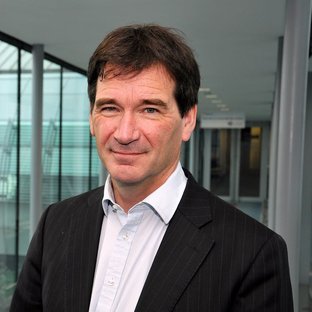
Professor Andrew Harrison OBE, FRS, FRSE
Biography
Professor Andrew Harrison is one of the most distinguished and successful research managers of his generation in Britain.
He came to St John’s in 1978 as a Scholar from Newcastle-under-Lyme Grammar School to read Chemistry and graduated with the top First of his year. He went on to complete a D.Phil. as a North Senior Scholar and then spent a period at the Canadian national neutron scattering facility in Chalk River before returning to Oxford as a Royal Society University Research Fellow. He held the latter appointment at the same time as a Junior Research Fellowship at St. John’s.
Professor Harrison’s career as a tenured academic was spent in Edinburgh, where he was appointed Lecturer in 1993, rapidly rising to Professor of Solid State Chemistry in 1999. It was during his period in Edinburgh that his talent as a leader of novel research structures came to the fore. He was asked to orchestrate and initiate a venture of a type new to the University: a multi-disciplinary Institute to be dedicated to studying the behaviour of matter under extreme conditions of high-pressure, high-temperatures and high magnetic fields. The Centre for Science at Extreme Conditions was – and remains – an outstanding success. Professor Harrison proved to have a natural talent for drawing people with differing backgrounds and perspectives together in a common enterprise, exercising a gentle but persuasive steer to keep the team together. He was elected a Fellow of the Royal Society of Edinburgh in 2003.
In 2006 he was invited to become the British Associate Director of the European neutron scattering facility, ILL Grenoble, with special responsibility for the science programme, stretching from fundamental physics to biology and engineering. There he implemented a major programme of instrument upgrades to equip the Institut for the coming decades, coupled with delicate negotiations with the partner countries. With that underway, he was asked to take over as Director-General of the Institute. He then become Chief Executive Officer (effectively Director) of the UK national synchrotron, the Diamond Light Source at the Rutherford Laboratory on the Harwell Science and Innovation Campus. This is the UK’s national facility for research using intense beams of highly polarised light for studying all forms of condensed matter, like ILL from physics to biology and engineering. Like ILL too, it employs 500 staff, looking after the needs of some 3000 research users from academia and industry.